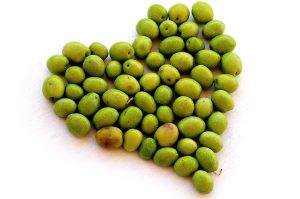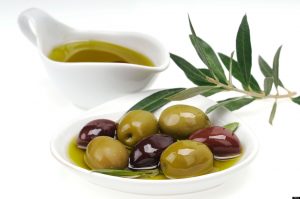By Dr. Shilpi Bhadra Mehta
Almost everybody think Extra-virgin oliveoil is good for health. The health benefits include its abundance of phytonutrients (nutrients derived from plants) that control inflammation, and powerful antioxidants with polyphenols lead the age-fighting pack. Olive oil has been associated with the prevention of cancer, strokes, and heart disease. But if your olive oil isn’t truly “extra-virgin,” its health benefits disappear and it may even be inflammatory and unhealthy!
Selecting extra-virgin olive oil off the store shelf seems simple enough—it says “extra-virgin” right there on the label. Easy. If we’re super selective, we might even reach for the expensive brand from Italy or Spain. You get what you pay for, right? The truth is, it’s just not that simple, and choosing imported “extra-virgin” olive oil is often the worst choice you can make.
“Consumer Reports found that many of the big names in imported olive oil, such as Bertolli and Filippo Berio, don’t taste good enough to meet the criteria to be ‘extra-virgin.’ The term refers to olive oil made from crushed olives without the use of high heat or chemical solvents” (Aubrey). Many imported olive oils simply don’t meet this definition.
There are five top things you should consider when determining the purity of your extra-virgin olive oil: region of origin, harvest date, composition, packaging, and color.
- Region of Origin
While US olive-oil producers are usually honest in producing a reliable product due to regulations and the fear of lawsuits, Mediterranean countries (including Italy and Spain) and Latin America don’t play by the same rules. This, more often than not, means that those expensive, imported “extra-virgin” olive oils are adulterated with other oils (including trans-fat oils), such as rapeseed (aka canola oil), soybean, corn, peanut, and others, making them not so extra-virgin after all.
The problem is that US producers make up only a small handful, about 2 percent, of the olive oil sold in the United States. “The remaining 98 percent comes from foreign producers in countries including Italy, Chile, Spain and Tunisia” (Aubrey). This means it can be extra challenging to find a pure, honest product.
- Harvest Date
Why is harvest date so important? Olive oil ages…and not gracefully. Generally, the more current the harvest date, the better the quality. Many olive oil producers outside of the United States do not include their harvest dates on their oils. This is a red flag, and these oils should be avoided.
Harvest dates can sometimes be tricky as well. Olive oil has a maximum shelf life of two years. An olive oil with a harvest date of “2014/2015,” for example, could have been made with olives harvested as early as October of 2014, so use the oldest date (in this case 2014) when determining shelf life. Some olive oils only have a single-year harvest date. A 2014 harvest date on a California-produced olive oil could mean the olives were harvested anytime between October 2013 and January 2014 (collectively, the 2014 harvest season).
- Composition
Extra-virgin olive oil (EVOO) is desirable due to its polyphenols and other healthy components that provide health benefits. However, many imported EVOOs are incorrectly labeled as “extra-virgin.” In his book Extra-Virginity: The Sublime and Scandalous World of Olive Oil, Tom Mueller states, “Major recent surveys of olive oil quality suggest that two-thirds of olive oil currently sold as ‘extra virgin’ in America is mislabeled: They fail to meet the major legal definitions of the extra-virgin grade.”
To be considered “extra-virgin,” olive oil must be unrefined, utilize fresh olives, and be chemical free. Make sure the kind of olive is identified as well. If one is not listed, this, too, is a red flag that the quality of the oil may be low and that the product being sold as EVOO is not pure olive oil but is mixed with low-quality oils.
Olive oils labeled as “light” are very low quality. Do not purchase these.
- Packaging
Extra-virgin olive oil should be packaged in dark-glass bottles to protect the oil from sun, light, and heat damage and to protect its flavor and healthy antioxidants. When olive oil is exposed to light or heat, it becomes rancid and oxidizes, contributing to, rather than preventing, heart disease. Because of its vulnerability to damage, olive oil packaged in plastic or clear bottles should not be purchased or consumed as its benefits have likely been compromised.
- Color
If olive oil is stored incorrectly, light and heat damage will likely be apparent in its color. Extra-virgin olive oil is green and a little pungent. If the olive oil is yellow or beige in color, this is a good sign that the oil is damaged or impure, and these oils should be avoided.
The Research
In a University of California, Davis, study, “researchers found that 69 percent of imported and ten percent of California-based oils labeled as olive oil did NOT pass International Olive Council (IOC) and US Department of Agriculture sensory standards for extra virgin olive oil” (Benson).
The following olive oils failed to meet the definition of extra-virgin olive oil: Bertolli, Carapelli, Filippo Berio, Mazzola, Mezzetta, Newman’s Own, Pompeian, Rachel Ray, Safeway, Star, and Whole Foods. While some of these brands did meet the EVOO definition in one or two of the three samples tested, they are not recommended due to the inconsistencies in these samples.
The following olive oils met the definition of extra-virgin olive oil in 100 percent of the samples tested: Corto Olive, California Olive Ranch, Kirkland Organic, Lucero (Ascolano), and McEvoy Ranch Organic.
“A full 83% also failed the more rigorous tests.” Reasons suggested for this include oils produced using old, damaged, or incorrectly stored olives; oils exposed to light or high temperatures; oils that were too old; and oils that were mixed with cheap oils such as vegetable or nut oils. (Jenkins)
Conclusion
Tom Mueller, during an interview with NPR stated, “What [good olive oil] gets you from a health perspective is a cocktail of 200+ highly beneficial ingredients.”
When choosing an extra-virgin olive oil, opt for US oils or imported oils that meet the IOC standards for extra-virgin olive oil. Blindly choosing an olive oil off the grocery-store shelf just because it’s labeled “extra-virgin” is risky, as consuming low-quality or damaged olive oil is worse than consuming no olive oil at all.
References
Aubrey, Allison. “U.S. Olive Oil Makers Say Imports Aren’t Always so Extra Virgin.” The Salt (December 6, 2012): accessed 6/5/15. http://www.npr.org/sections/thesalt/2012/12/06/166662525/u-s-olive-oil-makers-say-imports-arent-always-so-extra-virgin
Benson, Jonathan. “Toxic Rapeseed and Other Low-Grade Oils with Additives Are Being Passed Off as Olive Oil.” Natural News (March 2, 2012): accessed 6/5/15. http://www.naturalnews.com/035124_olive_oil_adulterated_canola.html
Frankel, E. N., et al. “Tests Indicate That Imported “Extra Virgin” Olive Oil Often Fails International and USDA Standards.” US Davis Olive Center (July 2010): accessed 6/5/15. http://xa.yimg.com/kq/groups/14202151/529651975/name/oliveoilappendix071510.pdf
Jenkins, Nancy Harmon. “Olive Oil Scam? Maybe Not.” Zester Daily (August 2, 2010): accessed 6.5.15. http://zesterdaily.com/cooking/olive-oil-scam-maybe-not/
Mueller, Tom. Extra-Virginity: The Sublime and Scandalous World of Olive Oil. W. W. Norton & Company, New York, NY. April 8, 2013.
NPR Books. “Losing ‘Virginity’: Olive Oil’s ‘Scandalous’ Fraud.” NPR (December 12, 2011): accessed 6.5.15. http://www.npr.org/2011/12/12/143154180/losing-virginity-olive-oils-scandalous-industry


